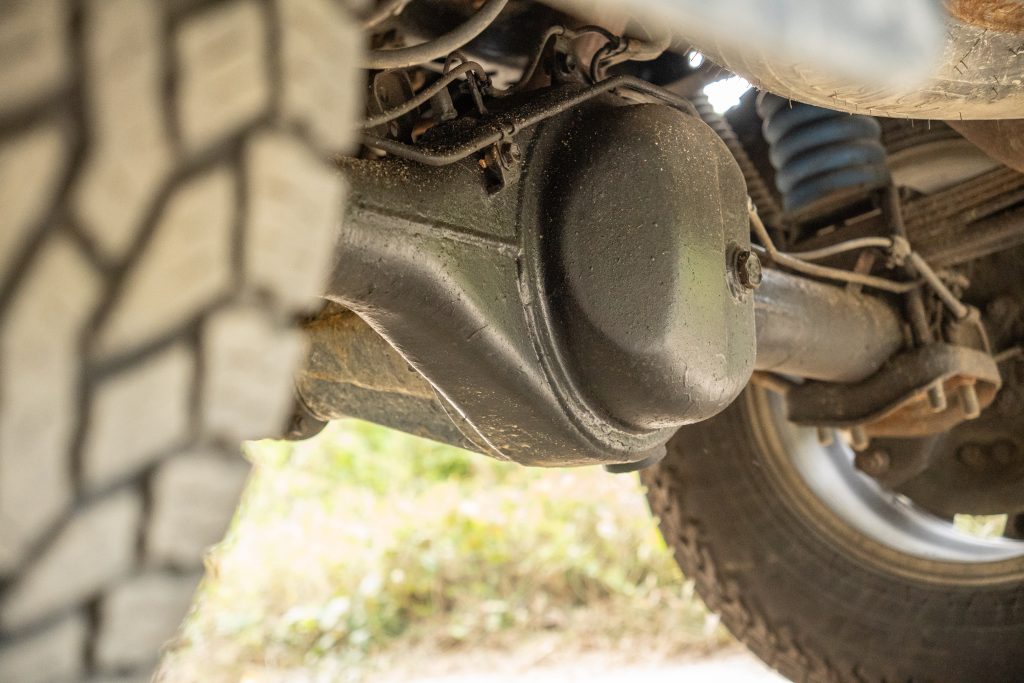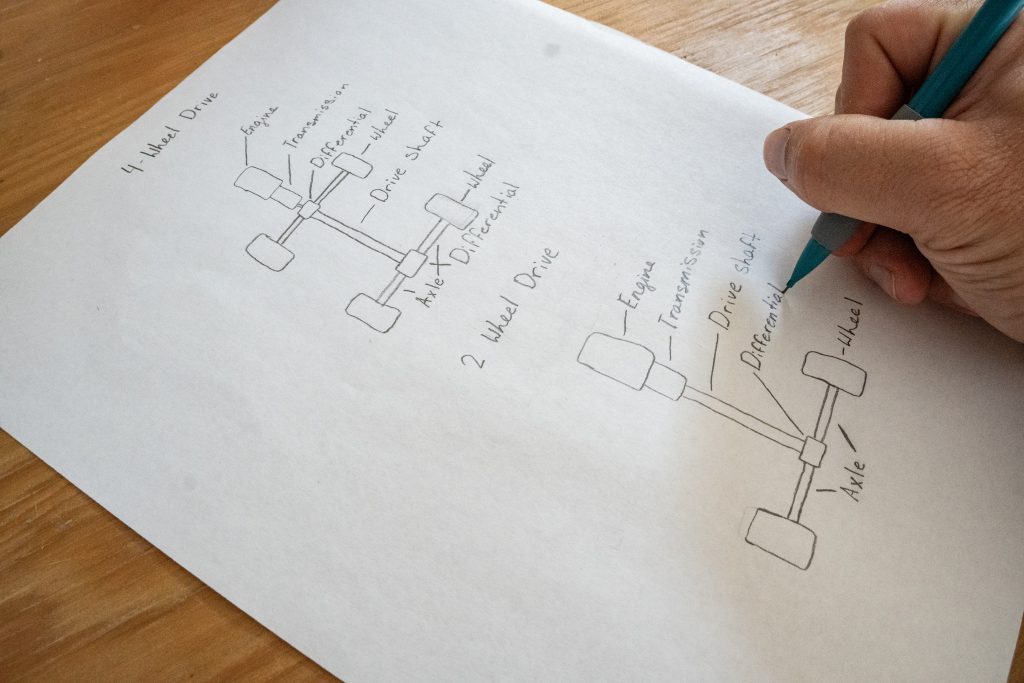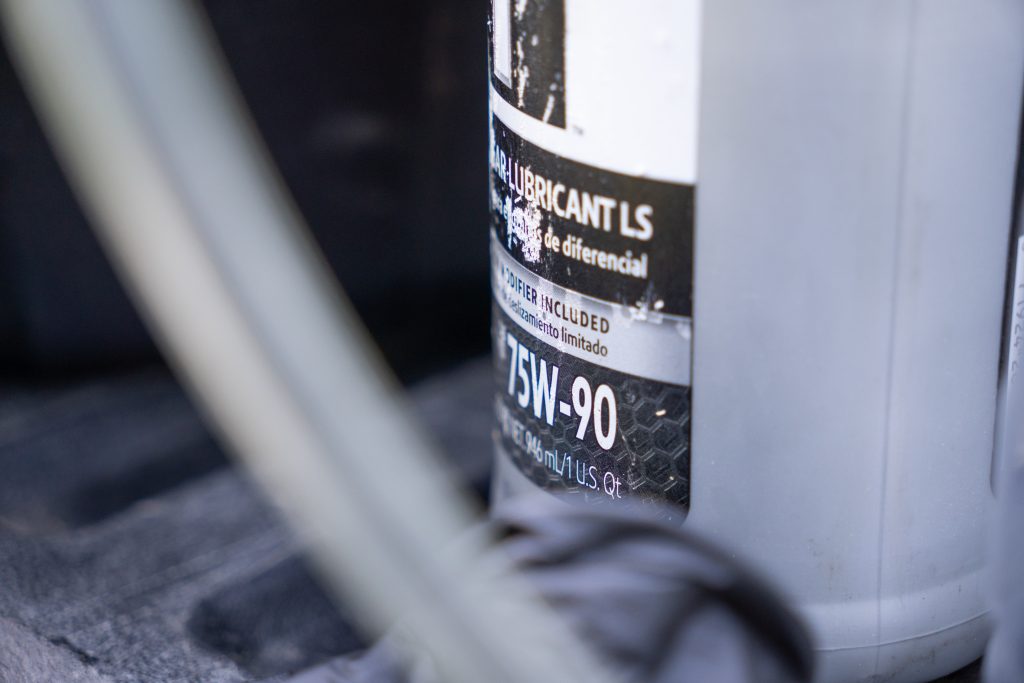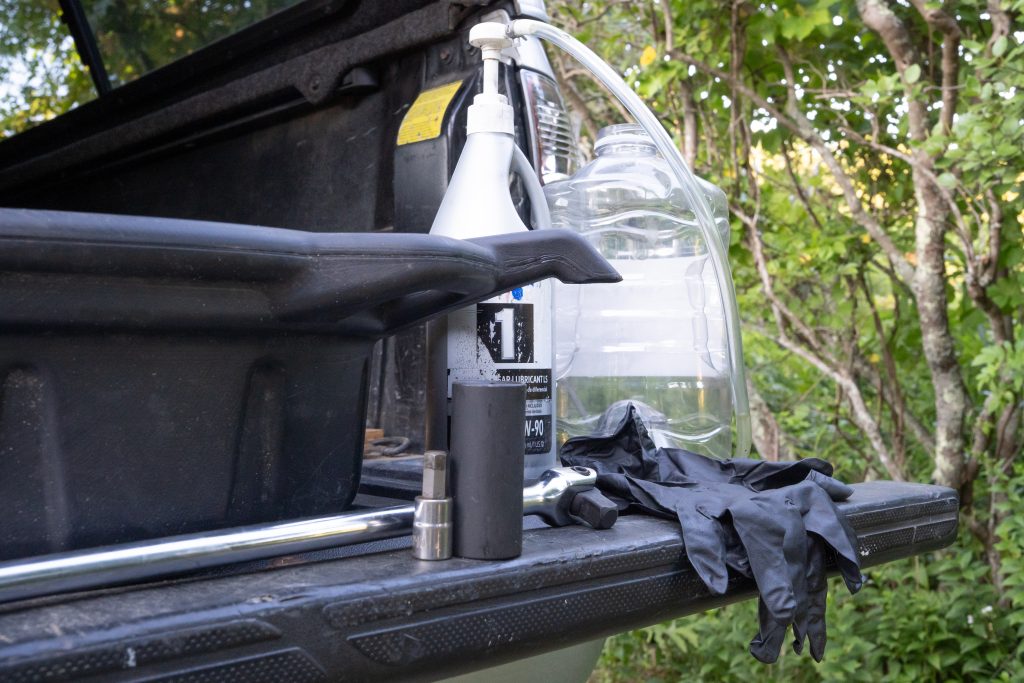
We all use oil, whether it’s for cooking, engine performance, heating, and more. And, like any oil, differential oil is a part of a vehicle that makes traveling safer, smoother, and more efficient. Without it, gears grind against each other with friction, making them hot and leading to serious damage. Doesn’t sound good, right? How would it feel for us to walk without the cartilage in our bodies, bone against bone? Sounds painful.
Now, imagine your gears while off-roading with all the stresses, such as going over bumps, long drives, towing, mudding, and more. Differential fluid helps lubricate the gears while also having cooling benefits to reduce wear and tear or even catastrophic failure. When it comes to our Tacomas, we know the importance of keeping them in ship shape for the next off-road adventure.
The same goes for towing. Many Tacomas today can tow up to ~6,500 lbs. With that added weight, more pressure is put on the differential than normal. Thus, keeping the differential cool becomes even more critical.
Table Of Contents
How Important Are Differentials?

Differentials in a vehicle serve a very important purpose. They allow the wheels on both sides to turn individually while the engine puts in the work. This is crucial because when you turn, the outside wheel rotates at a faster pace than the inside wheel. Without one, the wheels would be forced to spin at the same rate, which causes binding on high-traction surfaces like pavement. Essentially, it’s the same as engaging a front or rear differential locker.
A 4WD Tacoma has two differentials (front and rear), allowing the two wheels in the front and back to move independently. TRD Off-Road and TRD-Pro models have an electronically-locking rear differential (E-Locker).
How To Prevent Issues Down The Road

In general, vehicles with axles and/or CV Axles should have their differential cases checked. This includes the amount of oil that is in them, the oil’s age, and whether it is free of metal shards. Even though a Tacoma can handle a lot, maintenance is still key to keep them in optimal performance, ready to hit the trails.
One way to always keep them in ship shape is to look over your manual for maintenance intervals. The general interval to change the oil is around 80,000-100,000 miles, but if you take your vehicle off-road or tow often, then it may be best to do it sooner than that. And yes, even though you won’t be needing to change it as often as motor oil, it is still an important step to consider.
As an example, I had to change my Tacoma’s differential oil because it felt sluggish when I took my foot off the brake. As a vehicle with over 150,000 miles, I felt it was time to do some maintenance on the differential cases. Changing it made a world of difference.
As a side note, for most Tacomas, the oil used for the differential case is generally the same as what you would use for your transfer case, so it’s not a bad idea to change that while you are at it. Refer to your owner’s manual to make sure you use the right kind of oil. Proceed at your own risk, but if you want to go with what a lot of people use, that is 75W-90.
If you prefer the Toyota route, it is generally GL-5 Oil that is used. But do your research and go with what you feel comfortable with. But when in doubt, refer to the owner’s manual.
How To Change Your Differential Oil

Tools Required:
- Nitrile Gloves
- 10mm hex socket
- 24mm socket
- Drain pan (not a bad idea)
- Breaker bar
- Some form of lubricant for seized bolts if you’ve got a rusty Taco
- Oil pump for getting oil from the container to the case
- A container for putting the old oil in
- And, of course, new differential oil
When changing the oil, remember always to remove the fill plug first. Doing so ensures it is removable, and the case can be filled after draining. When removing the drain plug, be sure to clean the magnet, as that helps pick up small fragments from the gears and metal particles.
When refilling, make sure to put in fluid till it pours out the fill plug, as that is the amount that is needed. For exact amounts, you can find them in the owner’s manual of your vehicle. Generally speaking, 5 liters is enough for the front and rear differentials.
What’s good about the 2nd Gen Tacoma (and onward) is that they almost all have 24 mm sockets. Some use a 10 mm hex socket for the front differential, but check yours to see what you have. Be sure when you change the oil that if you go with the 75W-90, going for synthetic is generally a good option, as this helps improve performance.
If your truck has a limited-slip function (most Tacomas today do), make sure to find an oil that already contains the additive, as this helps the system perform better. Some argue the validity of the additive.
Final Thoughts

When it comes to differential fluid, keeping it full and fresh is crucial for longevity. Keeping up with this side of maintenance makes your Tacoma that much more reliable.
So, whether you’re driving on the highway or off the beaten path, you’ll be ready. Your Tacoma will thank you, and your driving experience will be smoother. Not only that, but it is also well known to occasionally restore your gas mileage and reduce gear whine!

